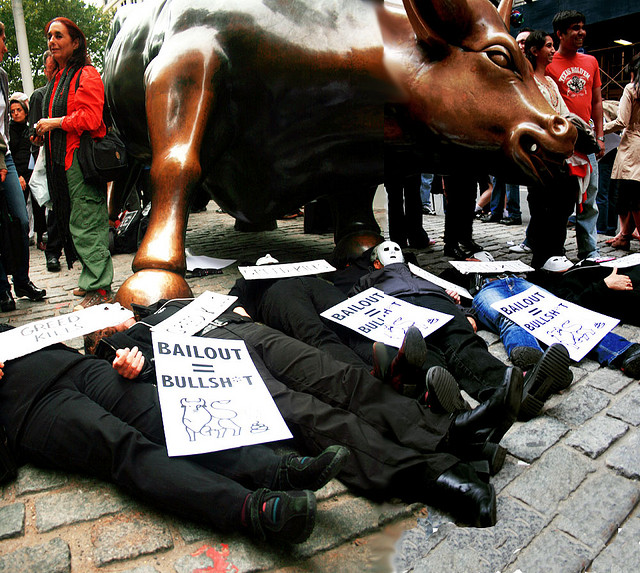
Published in partnership with Shadow Proof.
Yet more evidence that having a Wall Street-led recovery was a bad idea. The third installment in the Reuters series on post-crash Corporate America, called “The Cannibilized Company,” details a sad state of affairs for workers employed by large companies that turned to stock buybacks financed by increased borrowing to juice the company’s share price.
The push by Congress and the Federal Reserve to re-inflate the financial markets through bank bailouts and zero interest rates/quantitative easing has helped build a demented corporate finance system that encourages companies to borrow money to buyback their own stock then layoff workers.
Companies are using the Fed’s cheap credit policies to pile on debt through increased borrowing, then using the funds to buy their own stock back in hopes of increasing the share price. A corporate executive’s compensation is often tied to increases in stock share price, so while this financial engineering is good for the CEO and fellow top tier managers, it damages the company and screws lower level workers.
The money borrowed and used to buyback stock is also money not used to invest in property, plant, and equipment or research. To offset the borrowing costs companies not only forgo capital investment to pay lenders, they layoff workers. We are now in a vicious cycle of sterile activity that enriches CEOs and Wall Street money managers while hollowing out the real economy:
… corporate America is pouring unprecedented amounts into buybacks. Using debt to finance buybacks can produce tax or accounting benefits. The buybacks provide an alternative to capital investment or research spending when business conditions don’t justify making long-term bets. Instead, buybacks return profits to shareholders – and often enhance executive pay – even when a company hits lean times and is laying off workers.
In fact, buybacks have become the fuel powering the more-than twofold increase in the stock market since the depths of the financial crisis in 2009. Together, U.S. non-financial companies have spent $2.24 trillion on buybacks since 2009, while borrowing an extra $1.9 trillion to help finance those purchases, according to a Reuters review of Federal Reserve data.
What kind of a “recovery” is this? Or, more to the point, how long can such a vampiric system go on?
In 2008, the federal government took unprecedented and unpopular actions to save the large Wall Street banks. Part of that rescue involved keeping interest rates low and unorthodox efforts to stimulate the financial markets. The hope was that by stimulating Wall Street policymakers could indirectly stimulate the real economy.
Now, the markets are well stimulated and re-inflated. The problem — beyond increasing inequality by shifting wealth up — is that that rise is based significantly on an unsustainable corporate confidence game, not on fundamental economic strength. As the debt piles up and the pink sheets go out, one is forced to wonder if we are in another credit bubble getting ready to pop.

